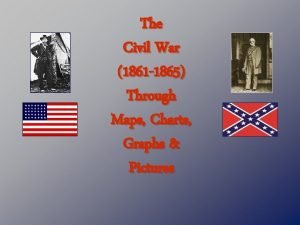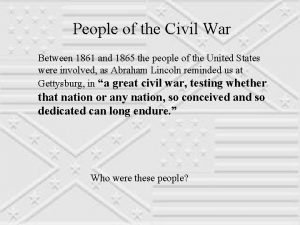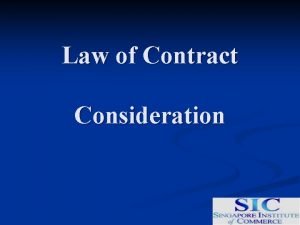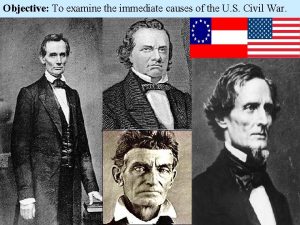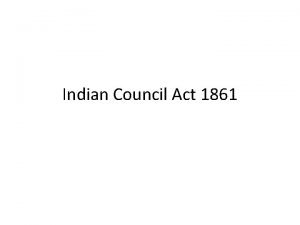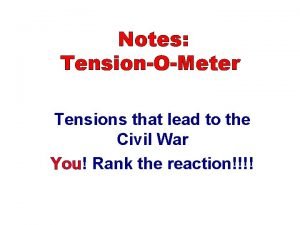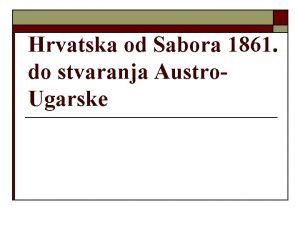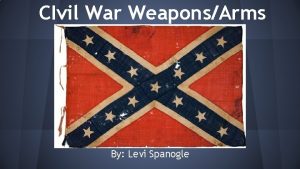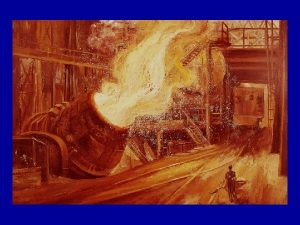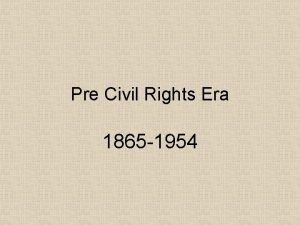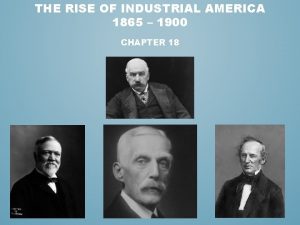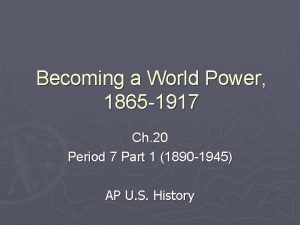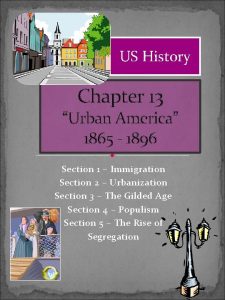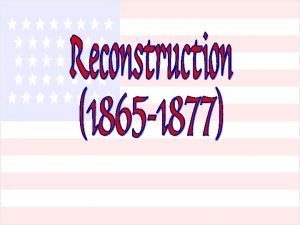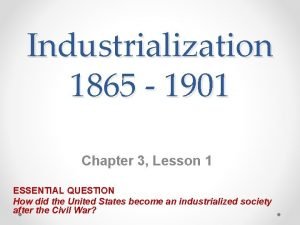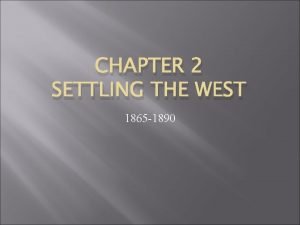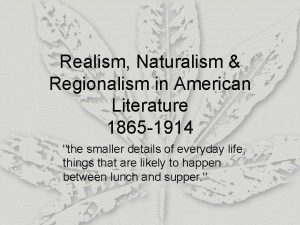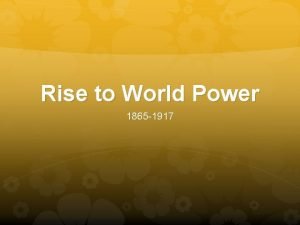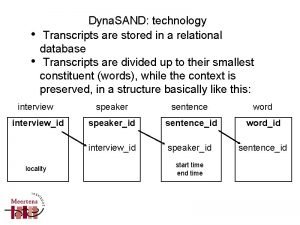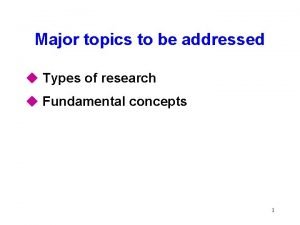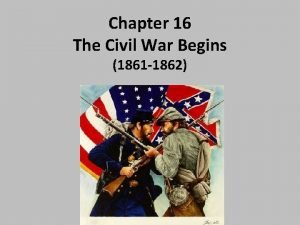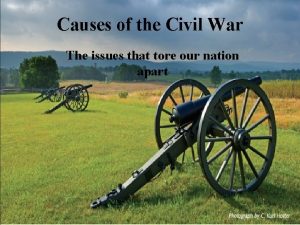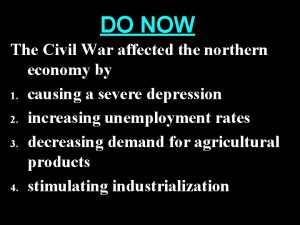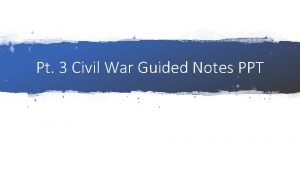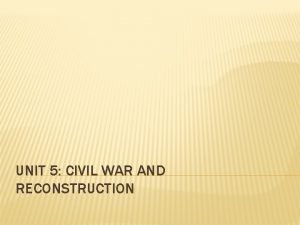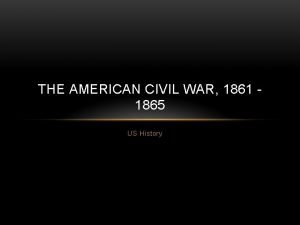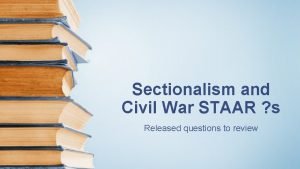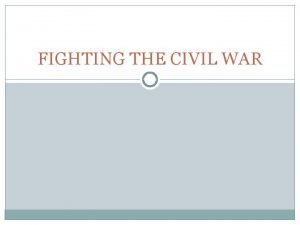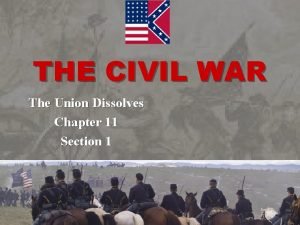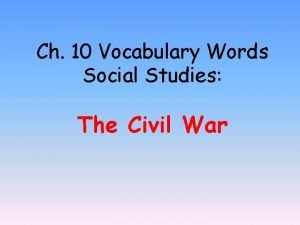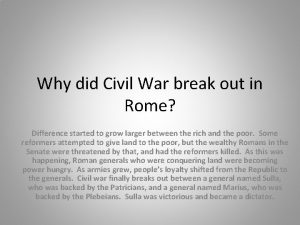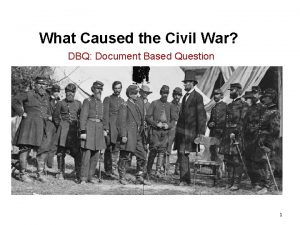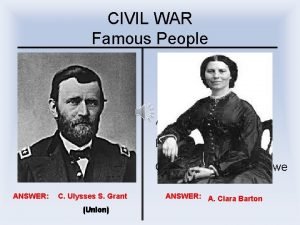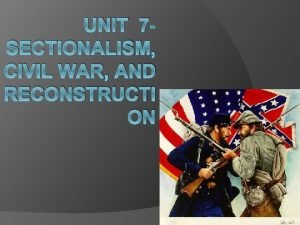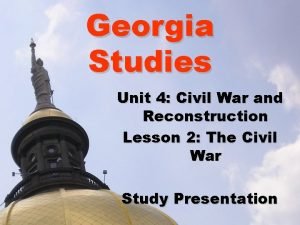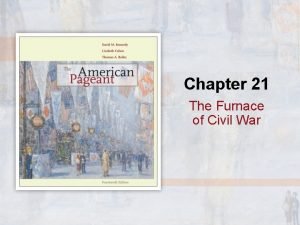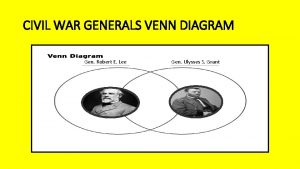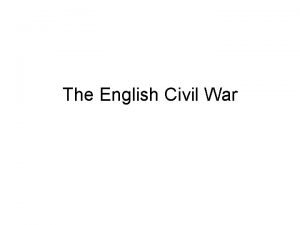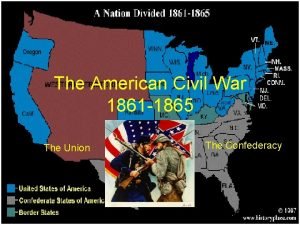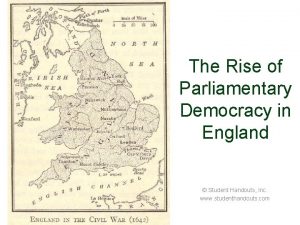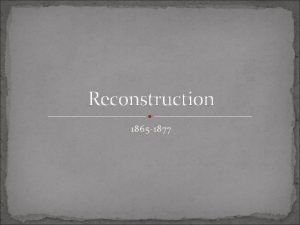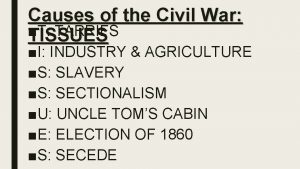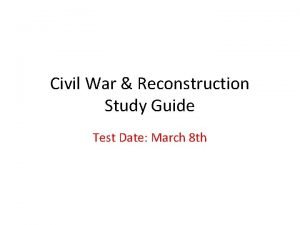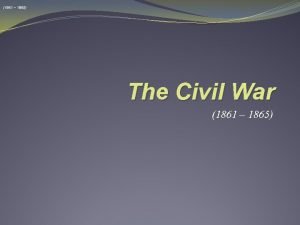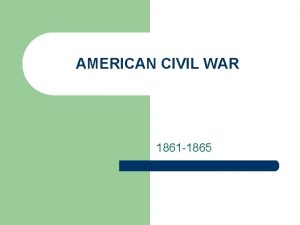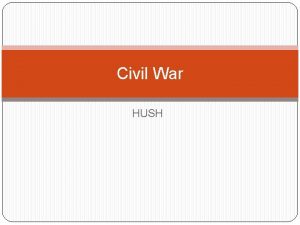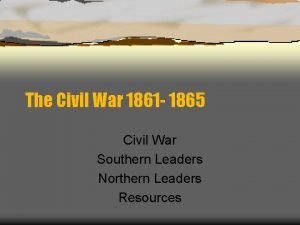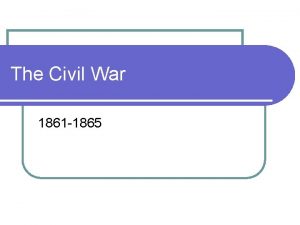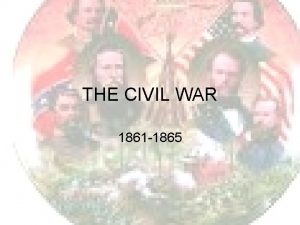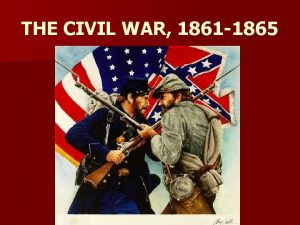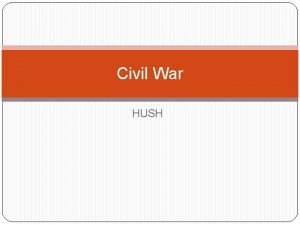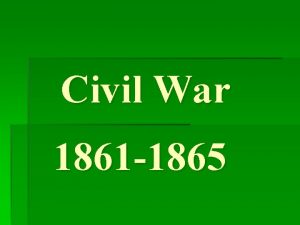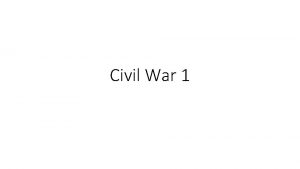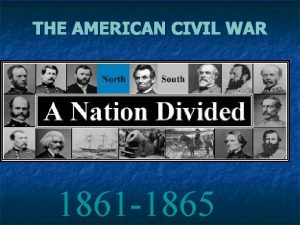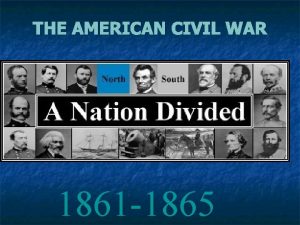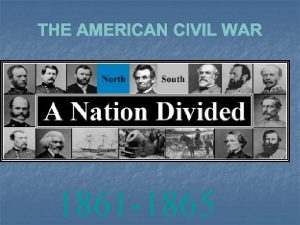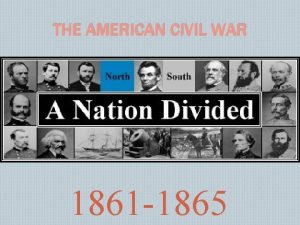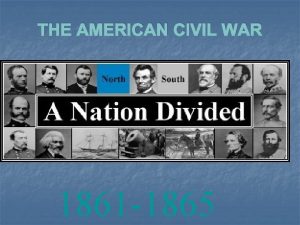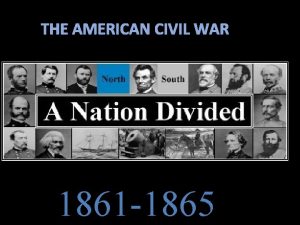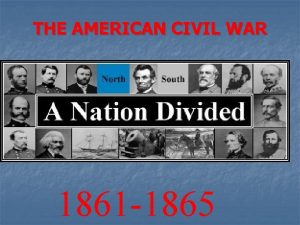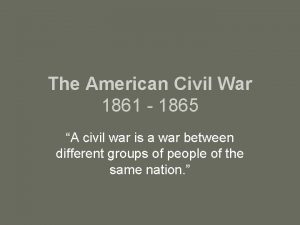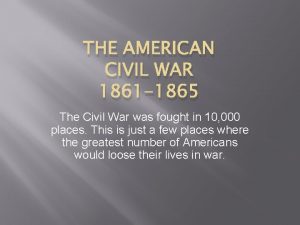The Civil War 1861 1865 StandardsElements Addressed n


























































- Slides: 58

The Civil War 1861 -1865

Standard(s)/Element(s) Addressed: n SSUSH 9: The student will identify key events, issues, and individuals relating to the causes, course, and consequences of the Civil War

Essential Questions : n n n What are the key events and issues that relate to the causes and conflict of the Civil War and changed the nation? How did key individuals of the Civil War period affect their governmental and social institutions and the course of the war? What were the war goals of both sides? How did they try to meet their war goals? Why did the North win? Why did the South lose?

Key Vocabulary n n n n n Civil War Confederate States Of America (CSA) Fort Sumter Antietam Shiloh Vicksburg Gettysburg Battle for Atlanta. Appomattox Court House n n n n Abraham Lincoln Gettysburg Address Habeas Corpus Ulysses Grant, Robert E. Lee, “Stonewall” Jackson, William T. Sherman, Jefferson Davis.

The Confederate States of America Original 7 1. 2. 3. 4. 5. 6. 7. South Carolina Georgia Alabama Florida Mississippi Louisiana Texas 8. Virginia n 9. 10. 11. Robert E. Lee offered Union command, but decides to fight for the South. Arkansas Tennesse e North Carolina

Border States n Stay with the Union n n Missouri Kentucky Delaware West Virginia n n The mountainous counties break w/ Virginia and become own state. Maryland n Washington, DC located here.

North and South n Families torn apart n n Mary Todd Lincoln’s brothers fight for the South. Robert E. Lee’s nephews fight for the North.

The North n 4 resources to rely on 1. Total population of 22 million people in 24 states to draw upon. n 2. Various economic resources n 3. South only has 9 million in 11 states. (3. 5 million were slaves. ) “The Industrial North”- coal, gold, iron, etc. Transportation n n Majority of the railroad lines located in the North. Easy to carry troops and food.

The South n 3 resources to rely on 1. 2. 3. Defensive War- South only had to defend a territory larger than Western Europe, not take it back. West Point graduates- Top military graduates from the school were originally from the South. “King Cotton”- belief that France and Great Britain would aid in exchange for cotton.

War Goals n North Original goal of Lincoln was to n “Preserve the Union. ” n As war progressed, freeing the slaves became a new goal. n n South The sole purpose of the war was for independence from the Union. Protection of land family. Fight a defensive war.

Southern War Strategies n 1. 2. 3. n “Boys in Gray” Fight a defensive war. Seize Washington, DC and move north into Maryland Drive a wedge between the Northeast and the Mid-West. Led by Gen. Robert E. Lee.

Northern War Strategies or the Anaconda Plan n 1. 2. 3. 4. “Boys in Blue” Blockade the Confederate coastline and cut off supply ships. Split the Confederacy in two and seizing control of the Mississippi. Seize the capital, Richmond and then drive South and link with Mississippi divisions. Squeeze

The Battle of Bull Run n Union Army- 28, 500 men. n n Confederate Army- 22, 000 men. n n Led by Gen. Irvin Mc. Dowell Led by Gen. P. T. Beauregard Mc. Dowell uses the balloon Enterprise for reconnaissance. n Developed by Thaddeus Lowe.

The Battle of Bull Run n July 21, 1861 Northern Virginia near Washington, DC “A holiday feeling in the air. ” n n Union forced to flee. n n The wealthy come to watch the battle. Underestimated the sheer force and determination of the Confederates so busy celebrating that they did not pursue.

Battle of Bull Run

Union Blockade n n Union warships block the imports and exports of the South had hoped to export cotton, tobacco, and sugar to Europe and then use money to buy military goods. Causes a 90% drop, which leads to rising prices on goods. South retaliates by seizing Union ships in North.

Eastern Theater n Gen. George Mc. Clellan appointed Commander of the Army of the Potomac by Lincoln. n n n Quickly turns volunteer soldiers into a working army. Army of the Potomac Criticized for being too cautious and not taking the offensive.

Western Theater n Gen. Ulysses S. Grant commands the western armies. n n February 1862 captures Ft. Henry and Ft. Donelson along the Tennessee River and opens a route to invade the Deep South’s protection of the Mississippi River slowly going away.

Battle of Shiloh n Union Army- 48, 800 men. n n Confederate Army 45, 000 men. n n n Led by Gen. Ulysses S. Grant. Led by Albert Sidney Johnston Grant drives South along the Tennessee River. April 6, 1862 - Grant is at first surprised by the Confederates and is defeated.

Battle of Shiloh n Union reinforcements led by Gen. Don Carlos Buell arrive on April 7. n n n Troops number 55, 000. Bloodiest battle of the Civil War. n More troops killed or wounded than in the American Revolution, War of 1812, and the Mexican War combined. n Union- 13, 000 n Confederacy- 10, 600 Grant wins- Union control of the Mississippi almost complete.

Capture of New Orleans n n n Union Navy commanded by David Farragut sails into New Orleans. April, 1862 - New Orleans taken by the Union. Complete control of the Mississippi. n Texas, Arkansas, and Louisiana isolated from the rest of the Confederacy.

Western Theater Ft. Donelson Ft. Henry Battle of Shiloh Capture of New Orleans Union Blockade

Second Battle of Bull Run n General John Pope ordered to make a second run at Richmond. Union Army at 63, 000 strong. Pope’s headquarters are raided by a Confederate cavalry. n Pope’s battle plan book is stolen!

Second Battle of Bull Run n n Southern Generals Robert E. Lee, James Longstreet, and “Stonewall” Jackson surround and defeat Pope. Command of 54, 000 troops. n Second major victory for the Confederacy.

Battle of Antietam n Lee crosses the Potomac with 45, 000 troops and enters Maryland. n n n Wants to turn Maryland away from the Union. Mc. Clellan moves to intercept Lee with 87, 000 troops. Lee’s battle plans discovered wrapped around 3 cigars. n Shows that Lee has separated his troops into 3 areas of Maryland.

Battle of Antietam n n n September 17, 1862 - Battle begins at 5: 30 a. m. Mc. Clellan only commits 50, 000 troops. The rest are sent on “reconnaissance missions. ” Battle ends at 5: 30 p. m. - Bloodiest single day of the war n n n Bloody Lane- 5, 600 casualties along the 800 yard road. Union- 12, 400 casualties. (25% of the total army) Confederate- 10, 316 casualties. (31% of the total army) Lee withdraws to Virginia. Mc. Clellan again does not pursue. n Lincoln claims Mc. Clellan has a case of “the slows. ”

Foreign Intervention n Threat of Great Britain and France aiding the Confederacy in hopes of getting raw materials and tariff-free imports. n n United States intercepts Confederate ambassadors going to Britain. n n Cotton shortage in Europe. Holds them until Britain threatens to enter the war. General Lee’s defeat at Antietam dissolves any hope of Europe helping the Confederates.

Medical Care n n Casualty- Soldier killed or wounded Soldiers wrote name on a piece of paper for body identification if killed. Amputations on the battlefield. No antiseptics to fight infection.

Black Soldiers in the North n n n Mostly non-combat tasksfederal law kept them out. Summer, 1862 - Congress passes law to allow them to fight. 186, 000 fight for Union. n n 68, 000 killed. White commanders lead black regiments. n n Less training, less pay, menial jobs. Some do see action and commit themselves with honor

Battle of Fredericksburg n n Northern General Burnside is considered a “little dim-witted. ” Attempts to invade an elevated position. n n December 13, 1862 - a direct assault is made on the city. n n 6 Union divisions attack one-at-a-time. Union suffers 2 x as many losses as the Confederates. n n n Traditionally uphill charges failed because of exposed troops. Union- 12, 600 Confederacy- 5, 300 Burnside fired!!!

Battle of Chancellorsville n General Joseph Hooker appointed new commander of the Army of the Potomac. n n Leads an Army of 133, 800. Re-supplied, rested, and ready to go. Generals Lee and Jackson lead an army of 60, 800 troops scattered all over Virginia. Hooker develops a superior battle plan– “on paper. ” n n n Fight a defensive battle. Let Lee fight into the troops. Double envelopment of Lee and defeat him.

Battle of Chancellorsville n May, 1863 - General Lee divides his troops and surprise attacks the Union army. n n n Lee takes 12, 000 men to attack Hooker. Jackson takes 40, 000 men to attack the right. Hooker forced to withdraw and the Union Army is defeated. High Point For the South! Jackson is shot by “friendly fire” during the night– dies later from the amputation of his arm. Hooker fired by Lincoln.

The Emancipation Proclamation n n January 1, 1863 Lincoln frees all slaves in areas taken by Union troops. Does not include Virginia or the border states. Many slaves return to their “masters” because no where else to go. Hopes to gain European support, and does.

Union Command n n June, 1863 - Gen. George Meade appointed commander of the Army of the Potomac Short tempered, loved by fellow generals, but not loved by his men. n n n Some referred to him as "a damned old goggle-eyed snapping turtle. " Excellent at delegating to subordinates. Could not handle army politics very well.

Battle of Gettysburg n n n June, 1863 - General Lee invades Pennsylvania. Union army controls the hills around Gettysburg, PA. July 2 - Longstreet orders General George Pickett’s 15, 000 troops to charge Cemetery Ridge, but are defeated. n n n 50% casualty rate for Pickett. July 4 - Lee withdraws to Virginia. Meade does not pursue n Lincoln angry.

The Battle of Gettysburg

Gettysburg Address n n n November 20, 1863 President Lincoln dedicates the Gettysburg Cemetery. Said that the Civil War tested whether a nation that believed all men were created equal could survive. n n First indication of changing war goals for the North. Freeing of slaves is now the number one concern

Eastern Theater Battle of Chancelorsville Battle of Fredricksburg Battle of Antietam Battle of Bull Run Battle of Gettysburg

Battle of Vicksburg n n Gen. Ulysses Grant and his 10, 000 man army force Confederate Gen. John Pemberton and his 9, 000 men to retreat into Vicksburg, Mississippi. Pemberton hopes for reinforcements, but they never come. n Told to sacrifice the city and leave– he refuses.

Battle of Vicksburg n n n Located on a high cliff overlooking the Mississippi River for easy shelling of boats. Union forces come up from New Orleans Grant circles around Vicksburg and attacks from the rear. July 3, 1863 - After 6 weeks of cannon shelling, Confederate troops surrender. CONFEDERACY FINALLY SPLIT DOWN THE MIDDLE !!

Gen. Ulysses S. Grant n n Major victories in the West. “Bloody Grant” n n n Lost 60, 000 men in a single month Believed in total wartotal destruction of the enemy. Made Supreme Commander of the Union Army by Lincoln in March, 1864.

Total War Gen. Benjamin Butler Gen. William T. Sherman Gen. Franz Sigel Gen. Nathaniel Banks

“March to the Sea” n n General Grant sends General William T. Sherman and 100, 000 troops with orders to take Atlanta, march to the Atlantic, and destroy everything along the way. Offers Lincoln the city of Savannah as a Christmas present.

Sherman’s March to the Sea Cut’s a 40 -60 mile wide path, and inflicts $100, 000 in damages.

The March to Richmond n n May, 1865 - Sherman turns north to the Carolinas. Grant “hammers away” at Richmond and General Lee withdraws from Richmond. April 9, 1865 - General Lee surrenders.

Appomattox Courthouse n n Location of the surrender. Grant’s terms of surrender 1. Troops could return home. 2. Troops surrendered their weapons. Officers could keep theirs. 3. Troops with horses could keep them and use on their farms.

End of the War March to Richmond Sherman’s March to the Sea Battle of Vicksburg Appomattox Courthouse

Capture of Jefferson Davis n n April 16, 1865 - Davis and cabinet members flee Richmond. Captured in Georgia on May 10 May, 1865 - Imprisoned for treason n 1866 released on bail. Never tried for treason. Davis went on to head up an insurance company. December, 1889 - dies at age 81.

WHY DID THE NORTH WIN?

The Confederate Army n Made up of 600, 000 soldiers n n n Volunteers Conscription- drafted white male citizens between age 18 -35. Could hire a “Substitute”. Became so desperate for soldiers that actually promised slaves freedom if they would serve. 75, 000 battle deaths. 60, 000 “other” deaths.

n 2. 2 million serve n n n n Bounty paid to any volunteer. n Bounty Jumping. Collecting bounties from different armies under assumed names. Conscription Act- all male citizens of age 21 -45 would serve in the Army. Exemption could be bought for $300. 140, 000 battle deaths. 225, 000 “other” deaths. 280, 000 wounded. More deaths than south but more people in the North The Union Army

n n n Southern Finances Southern wealth was in land slaves. Only 3 ways to raise money 1. $100 mill. in war bonds. 2. Borrowed $15 mill. 3. Raised $100 mill. in taxes. Value of the Southern dollar declines because $1 bill. is printed with promise of gold return. n 1865 - worth on 1. 6 cents in gold.

Northern Finances n 4 sources of revenue 1. 2. 3. 4. The Tariff- Raised import duties to 47%. War Bonds- Allowed the creation of National Banks, with the requirement that 1/3 of the capital be invested in U. S. war bonds. Income Tax levied in 1861 - 3% tax on all income over $800. Taken away in 1872. Issuance of Paper Money- Greenbacks issued with ability to redeem in gold.

Northern Industry n n n Inflation never got out of hand because Northern industry could supply all the material demands. Sewing machine invention helped to make uniforms faster. Profiteering- greedy businessmen taking unfair profits in a time of national crisis.

Civilian Economy n Union blockade ruins Southern industry. n n Creates a shortage of goods and high prices. No serious lack of food, but no railroads to transport the food to the troops. Branch rail lines torn up to repair main lines. Therefore there are major food shortages in the Southern cities.

Homestead Act of 1862 n n n Gave 160 acres of land to anyone who would pay a registration fee and live on the land for 5 years. 2. 5 million acres given to 15, 000 plus settlers. Kept the Congress popular with people in the North

Election of 1864 n Union (Republican) Party n n n Democratic Party n n Abraham Lincoln Believes he may actually get defeated because of anti-war feelings. Gen. George Mc. Clellan Disagrees with party platform that the war is a failure. Sherman’s successes occur just before election. Lincoln wins !

The End
 Civil war 1861/1862
Civil war 1861/1862 Civil war 1861/1862
Civil war 1861/1862 Why was the civil war the first modern war
Why was the civil war the first modern war Chapter 16 lesson 2 challenges to slavery
Chapter 16 lesson 2 challenges to slavery Lush j in currie v. misa
Lush j in currie v. misa John brown poster
John brown poster Features of indian council act 1861
Features of indian council act 1861 Tensionometer
Tensionometer Unionistička stranka 1861
Unionistička stranka 1861 Springfield model 1861 rifle facts
Springfield model 1861 rifle facts Civil rights webquest
Civil rights webquest Gregor mendel 1865
Gregor mendel 1865 The rise of industrial america 1865-1900
The rise of industrial america 1865-1900 Industrialization (1865 to 1901 worksheet answers key)
Industrialization (1865 to 1901 worksheet answers key) What are characteristics of impressionism
What are characteristics of impressionism Where did the term “impressionism” come from?
Where did the term “impressionism” come from? 15 th ammendment
15 th ammendment The rise of industrial america 1865-1900
The rise of industrial america 1865-1900 1865 to 1900 inventions
1865 to 1900 inventions Chapter 20 becoming a world power notes
Chapter 20 becoming a world power notes Urban america 1865 to 1896
Urban america 1865 to 1896 1877-1865
1877-1865 Industrialization (1865 to 1901 worksheet answers key)
Industrialization (1865 to 1901 worksheet answers key) Native clothing
Native clothing St helen’s smelting co v tipping (1865)
St helen’s smelting co v tipping (1865) Realism naturalism and regionalism
Realism naturalism and regionalism Becoming a world power 1865-1917
Becoming a world power 1865-1917 The third epistle of st. john is addressed to________.
The third epistle of st. john is addressed to________. Technology addressed
Technology addressed Topics to be addressed
Topics to be addressed Partially addressed mail service
Partially addressed mail service Partially addressed mail
Partially addressed mail Invoked audience
Invoked audience ●non-programmed
●non-programmed Addressed to the party misled peek v gurney
Addressed to the party misled peek v gurney Chapter 16 the civil war begins worksheet answers
Chapter 16 the civil war begins worksheet answers What were the 4 main causes of the civil war
What were the 4 main causes of the civil war The civil war affected the northern economy by:
The civil war affected the northern economy by: Civil war guided notes
Civil war guided notes Civil war and reconstruction vocabulary
Civil war and reconstruction vocabulary America civil war
America civil war Civil war staar questions
Civil war staar questions Civil war union strategy
Civil war union strategy Southern states civil war
Southern states civil war Civil war vocabulary list
Civil war vocabulary list Why did civil war break out in rome
Why did civil war break out in rome Causes of the civil war dbq
Causes of the civil war dbq The turning point of the civil war
The turning point of the civil war Famous people in the civil war
Famous people in the civil war Remembering world war 1 achieve 3000
Remembering world war 1 achieve 3000 Unit 4 civil war and reconstruction
Unit 4 civil war and reconstruction Chapter 21 the furnace of civil war
Chapter 21 the furnace of civil war Robert e. lee and ulysses s grant venn diagram
Robert e. lee and ulysses s grant venn diagram English civil war timeline
English civil war timeline The union blockade during the civil war
The union blockade during the civil war Civil war dates
Civil war dates Aftershock beyond the civil war
Aftershock beyond the civil war Tissues causes of civil war
Tissues causes of civil war Civil war and reconstruction study guide
Civil war and reconstruction study guide
